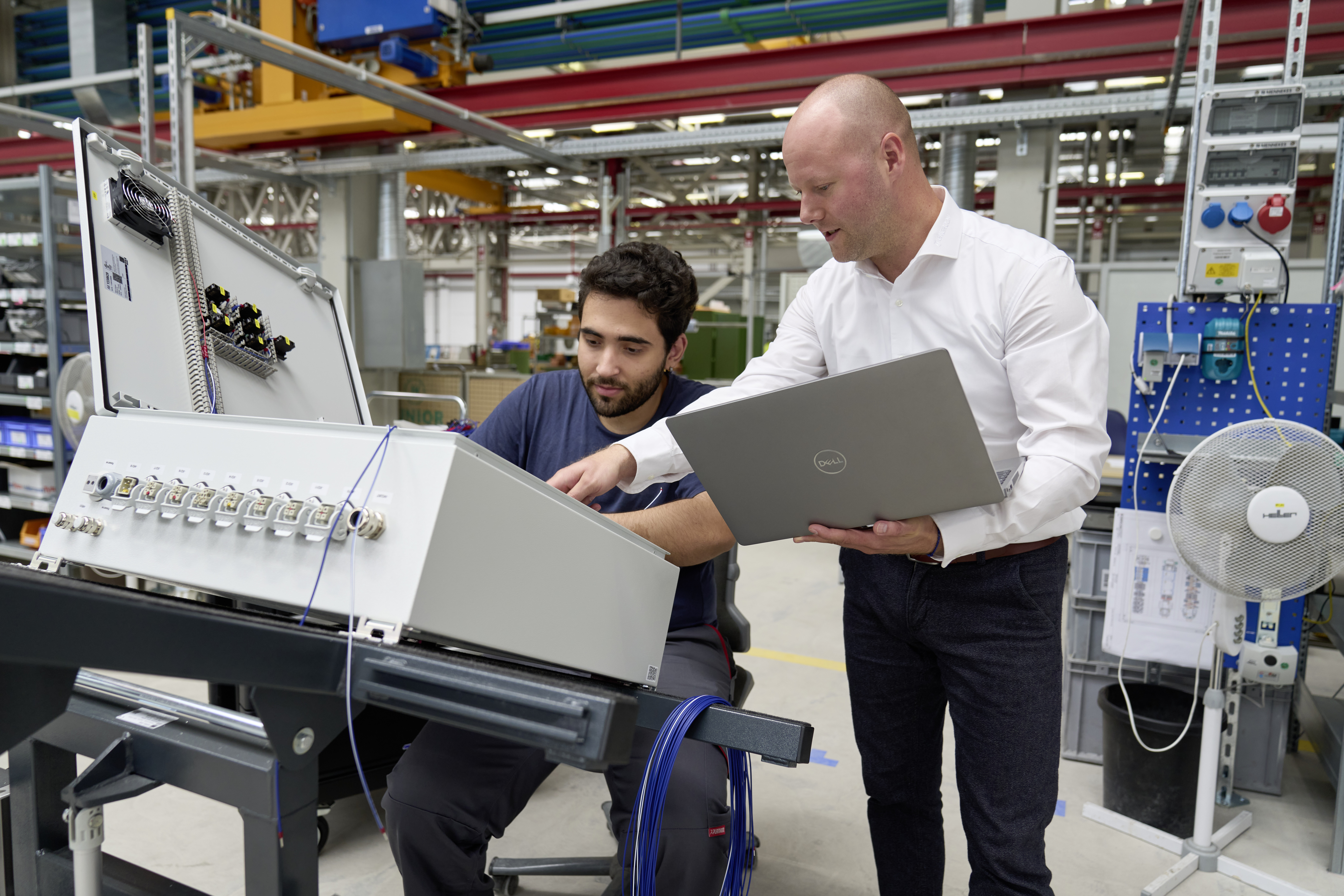
How to Choose the Right Electrical Enclosure For Your Needs
Electrical enclosures are a necessity that make the modern world possible. These humble enclosures, also known as cabinets of boxes, allow electrical equipment to be safely contained in order to function, without which there would be no manufacturing, no modern transport, communication (and just about everything else) would be vastly different. So it’s a no-brainer that using the right enclosure, for the right purpose, is essential.
Rittal’s expertise makes these decisions much easier! The comprehensive portfolio of solutions for various industries including rail, automotive and renewables, provides quality, fit-for-purpose options, with local service and support to help you with your project.
Let's take a trip down memory lane. Did you know that in 1961, Rittal became the first company in the world to series-produce electrical enclosures? Starting with the compact enclosure AE, the predecessor of Rittal’s current AX range. A modest range of enclosures developed into the world’s largest modular system for electrical enclosure manufacture. Since Rittal was founded, the company’s impressive innovative strength has spawned numerous enclosure generations, with millions of units in use – always ahead of time
Choosing the right electrical enclosure
It’s important to have a clear grasp of the different aspects that you’ll need to consider in order to choose the right electrical enclosure for your specific application. How robust will it need to be (will it experience frequent vibrations from passing trains for example?); will potential vandals be able to access it; does it need to be ergonomically designed; or have electromagnetic capability...?
Some electrical enclosure design is also driven by specific industries as changes in legislation can mean what was once considered fit for purpose is now no longer suitable in that environment. Let’s take the food and beverage market as an example. At one time standard electrical enclosures were seen as sufficient, now due to changes in food hygiene regulations, the need for hygienically designed electrical enclosures is now a necessity within a food and beverage production environment.
Electrical enclosures on production machinery need to be able to cope with the rigour of daily high-pressure chemical washing. Standard design IP ratings and enclosure seals are no longer acceptable for protecting the critical equipment they are housing which ensures the smooth running of these facilities.
One thing is clear, electrical enclosures need to be versatile and open to the changes in technology. Enclosure manufacturers need to be innovative in their ability to create solutions for customers markets or industries, where the current enclosure offering is not suitable. Rittal is aware that future technology will almost certainly keep shrinking in size and that in time, more equipment will need to be fitted into an electrical enclosure in which the components will need to be connected.
Electrical enclosures protect your critical technology
Certain technology, such as technology placed in vulnerable outdoor locations, face particular risks. Dust, moisture, vandalism, the environment, shocks or vibrations, as well as other factors, can have a hugely detrimental impact if the equipment is not sufficiently protected.
This protection will be provided by an enclosure, but the right electrical enclosure must be selected to suit both your application and its location.
Some considerations you should take into account include:
- Enclosure material: Fibreglass and GRP boxes are cost-effective for both outdoor electrical enclosures and indoor applications, including situations where metal enclosures may not be appropriate. Plastic is non-conductive and resists corrosion from many chemicals, which may be necessary in the chemical industry. Stainless steel may be required for hygienic locations, while aluminium is lightweight for applications where quick installation may be necessary, such as railway trackside positioning, as is also naturally resistant to corrosion and rust making it suitable for many outdoor applications. Metal electrical enclosures often block EMF and RFI waves, which may be a requirement to protect your technology, or this feature may be unsuitable. Learn more about plastic vs metal electrical enclosures.
- Single or double-skinned: As you might expect, single-skinned electrical enclosures have a simpler construction (typically just a single sheet of folded steel) and so are usually cheaper to buy. However, Double-skinned electrical enclosures may be better suited to housing your electrical equipment if: the equipment needs to be kept at an optimum temperature, the systems are sited in a public space and the nature of the systems that the enclosure houses is such that higher security levels are required, or there is a need for quick and easy repairs/maintenance. Learn more about single vs double-skinned electrical enclosures.
- IP, IK and RC rating: Certain applications require a specific IP and IK rating or Resistance Class (RC) for your electrical enclosure. RC is the enclosure’s ability to withstand forces that could damage (or enable someone to remove) the equipment inside. Rittal’s engineers test their double-skinned outdoor electrical enclosures to understand the amount of time needed to breach them. Their resistance levels are such that they have been awarded RC 2 ratings. You may choose an enclosure with this higher Resistance Class if it’s in an area with a significant risk of vandalism and theft.
Typical outdoor enclosures have an appropriate protection class IP, taking into account the environmental conditions, of course. In an environment with a lot of fine sand and extremely strong winds, different requirements are placed on the tightness of the outdoor enclosure than in a setup in the middle of a residential area. Learn more about IP ratings for outdoor electrical enclosures.
Empty electrical enclosures are regulated in terms of many aspects, such as the impact class; the degree of resistance to mechanical impact on the enclosure. This value is expressed in the IK value. The IK class has a 1 to 1 relationship with the protection class IP and describes at what energy level a certain level of protection is maintained against the penetration of foreign objects/dust and water.
- Temperature regulation: More often than not, climate control is hugely overlooked. Sitting equipment in an electrical enclosure works much like a flask, some heat transfer will be lost but how much heat is being generated in the first place? Has a thermal calculation been carried out? Rittal's RiTherm can help you calculate the heat in your electrical enclosure. If the enclosure is subjected to higher ambient temperature or more equipment is installed at a later date, considerations need to be made about whether cooling can be added as an option later on. These are important points that if considered early on can save huge amounts of time and cost, further down the line.
- Security: It’s important to consider the level of security required. This may mean choosing a dual locking system for added protection. It may mean that fencing is required around the electrical enclosure. It may mean EMC shielding is required, or a higher RC is essential. Each situation will be different, and so it’s imperative to understand the requirements needed.
At Rittal, we specialise in providing multiple types of electrical enclosures for usage in a wide variety of instances. Our wealth of expertise will help guide you towards the perfect electrical enclosure for your needs.



